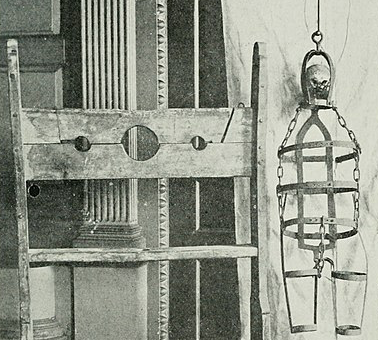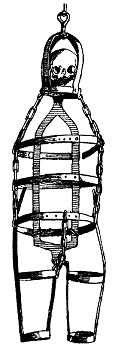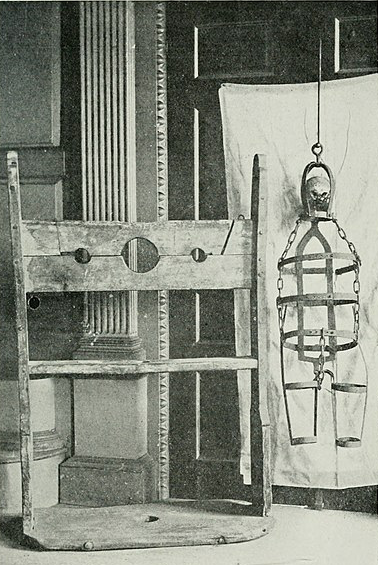
Gibbeting is an old form of post-mortem punishment. When a person in England was condemned to the gibbet for murder, smuggling, or stealing, he was first executed and then placed inside an iron cage to be hung up for display.
This form of English common law punishment was made more notable with the passing of the Murder Act in 1751 which stated that the “crime of murder ha[d]… been more frequently perpetrated than formerly… [and] it [was] thereby necessary that some further terror and peculiar mark of infamy be added to the punishment of death.”
The whole purpose of the punishment was to appear so terrible that it would discourage others from committing these crimes.

The corpses of the condemned were hung up on display beside busy roads, at the crossroads, and along the waterways.
It was unlawful to bury the bodies of murderers unless they were either first hung in chains or handed over to anatomists for dissection. Women who were executed while the Murder Act was being enforced were generally handed over to the anatomists because they were in need of women’s bodies.
How long these corpses were left on display varied from place to place, and by the crime committed by the condemned.
Sometimes pirates were hung on a gibbet by the sea. The body was then left to hang at the low water mark so that the tide would cover his body. After the body had been submerged by three incoming tides, it was removed.

If a criminal was well-known, his body might have been displayed along the water or a road where, instead of being a deterrent, it became a gross tourist attraction.
It was reported that some gibbeted bodies could attract up to 40,000 visitors in a single day.
Sometimes the bodies of the condemned were placed in the iron cage and left to rot in public until the bones showed through the decayed flesh.
A few caged bodies remained hanging for decades. It was said that such bodies were painted with tar each year so that the corpse remained intact.
Gibbet cages were made and used for one criminal. They were not generally reused. This meant that gibbets had to be constructed immediately after someone was sentenced to be executed so that the device was ready for the post-mortem punishment.
The condemned was sometimes measured for his iron cage before execution, but it appears that this step was sometimes skipped and there were reports of the condemned resisting being measured.

Some ingenious blacksmiths were able to create gibbets with metal bands that could be tightened or loosened around the condemned as needed, so that taking a measurement was unnecessary.
James Cook was one of the last men to be gibbeted. He was a bookbinder and had been convicted of murdering his creditor. He was hung on August 10, 1832. After his execution, his head was shaved and tarred. The cap he wore during the hanging was drawn tight around his face to keep it covered as he rotted. He was then placed in the iron gibbet and suspended in the air at Saffron Lane. It was an immediate tourist attraction that caused a lot of distress among those who lived in the neighborhood. A few days after the body was hung up, it was removed.
The practice was formally abolished in England in 1834.

